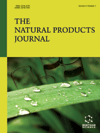
Full text loading...
The prevalence of parasites in Thailand, primarily transmitted through contaminated vegetables, poses a significant public health concern. Ensuring the safety of natural produce from both parasites and chemical residues necessitates robust sanitation measures.
This study aims to develop effective vegetable-washing solutions using papaya seed extract with potent anti-parasitic properties contamination in fresh vegetables.
Fresh vegetables contaminated with Strongyloides stercoralis larvae, Ascaris lumbricoides, and Taenia spp. eggs were subjected to various treatments: distilled water, tap water, vinegar (5%), papaya seeds extract (200 mg/L), lauryl glucoside (1%) from coconut oil, papaya seeds extract combined with lauryl glucoside, and Albendazole as a standard drug. Immersion for 5 minutes was followed by parasite observation using the sedimentation method over 60 minutes, examining inhibitory effects on parasite larvae movement.
Papaya seed extract achieved the most rapid cessation within 10 minutes for larvae movement, followed by vinegar and papaya seed extract combined with lauryl glucoside. Furthermore, papaya seed extract combined with lauryl glucoside exhibited the highest efficacy in the sedimentation larval and parasite eggs, followed by lauryl glucoside solution and papaya seed extract, surpassing the control group.
Papaya seeds extract immobilized larvae, while lauryl glucoside effectively eliminated parasite eggs from vegetables. Natural and organic compounds derived from papaya and coconut oil exhibit inherent diversification in their properties. These compounds originate from natural sources, showcasing distinct characteristics attributed to their organic nature. These results indicate the potential for developing natural extract-based products as future vegetable-washing solutions, emphasizing their significance against parasitic efficacy.

Article metrics loading...

Full text loading...
References


Data & Media loading...

